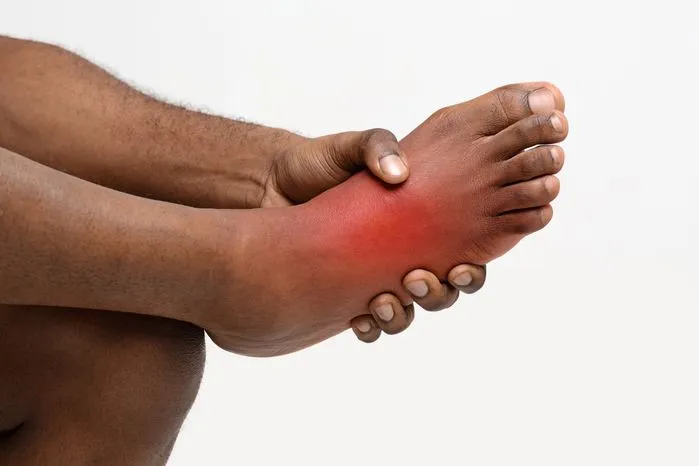
The body’s circulation system is responsible for supplying blood, oxygen, and nutrients to the entire body. However, narrow paths or obstacles may slow down blood flow making it difficult for blood to efficiently reach the body organs, especially the limbs. As a result, one may experience symptoms of poor blood flow, necessitating poor circulation treatment to resume proper body function.
What Is Poor Circulation?
Poor circulation in itself isn’t a condition. Instead, it results from other health issues. It happens when something interferes with the body’s circulatory system responsible for delivering blood, oxygen, and nutrients.
Poor circulation in foot treatment involves treating the underlying causes rather than the symptoms. A common symptom seen in many patients with poor circulation is numbness and a “pins and needles” sensation. Other symptoms include cold fingers or toes, swollen legs, bulging veins, pale or blue skin, and in some instances leg pain.
Poor or complete lack of blood flow is not only uncomfortable but also life-threatening if poor circulation in legs and feet treatment and management isn’t done promptly.
Causes of Poor Blood Circulation
The first step in treatment for poor circulation in legs is to understand the cause. This way proper treatment can then be decided by the healthcare provider. Some common causes of poor blood circulation include:
- High blood pressure: The blood vessels become weakened as blood pushes against the vessels with force making it harder for blood to move.
- Diabetes: Too much glucose in the blood can cause the blood vessels in the leg to become narrow and stiff. This results in reduced blood flow in the feet. Some patients often ask: how can diabetics improve circulation? Seeing a doctor regularly can help you get advice on proper management and healthy choices.
- Peripheral artery disease (PAD): Plaque buildup in the peripheral arteries cuts down the amount of blood getting to the legs and feet. If poor circulation lower legs treatment is not done early it can cause tissue death and possibly amputation.
- Raynaud’s disease: This syndrome causes blood vessels to narrow when someone is cold, or sometimes when stressed, limiting blood flow to the fingers and toes.
- Age: As seniors become more sedentary they tend to suffer from poor blood circulation.
- Pulmonary embolism (PE): A blood clot in the leg breaks off and goes to the lung, which keeps blood from getting to the lungs.
Diagnosis Of Poor Circulation
The big question is can poor circulation be reversed? It depends. A diagnostic test is the only sure way to know whether the underlying causes of poor circulation are treatable. A clear diagnosis also helps the doctor offer the best treatment for poor circulation in hands and feet.
Besides a physical exam, your doctor may order an antibody blood test to detect inflammatory conditions such as Raynaud’s disease or try cold stimulation to observe the body’s response. Other tests include a blood sugar test for diabetes, and a Doppler ultrasound or CT scan.
Poor Blood Circulation Treatment
The most ideal treatment for poor circulation in lower legs depends on the cause, which often involves the arteries or veins. Depending on the underlying condition, you may either require medication or surgical procedures.
Medications commonly used in poor circulation in toes treatment are such as statins that prevent plaque buildup, and antiplatelet drugs like aspirin that prevent the formation of large blood clots. A doctor may also prescribe blood thinners to prevent blood clots and thrombolytics to get rid of large, dangerous blood clots.
Majority of patients see the most benefits from a vascular treatment for poor circulation in the legs such as angioplasty or bypass surgery. In an angioplasty, a long thin catheter is put into a blood vessel and guided to the blocked artery with the help of x-ray. A balloon is then inflated to press the plaque or blood clot against the side of the artery, thus widening the artery and allowing for increased blood flow.
A bypass surgery is often done to heal foot sores caused by bad blood circulation. A vein or synthetic graft is attached above or below the blockage to reroute blood flow, thus increasing circulation to the legs and feet. Other surgical procedures for poor circulation in feet treatment include a catheter-assisted thrombus removal and closing or removing varicose veins. A vascular surgeon can also insert a vena cava filter to keep blood clots from reaching the lungs.
Any surgery for poor circulation cure and medications such as blood thinners have a risk of bleeding. Your physician can help you better understand what can be done for poor circulation by getting your dosage right to avoid excessive bleeding.
How To Treat Poor Blood Circulation Through Proper Management
The best way to improve circulation in the feet is to treat any underlying conditions that may be causing it. However, if vascular specialists cannot accurately narrow down on a cause, they can recommend how to treat poor circulation in legs through several self-strategies.
Exercise
Exercise is a good treatment for poor circulation in hands and lower limbs. Low impact exercises such as cycling, swimming, and walking can help alleviate pain and discomfort caused by poor blood flow.
Compression Garments
With the doctor’s approval, compression garments can be used in poor blood circulation in leg treatment as they help increase blood flow to the legs and feet.
Stop Smoking
Quitting smoking improves blood circulation, decreases your risk of cancer, and lowers the chances of having a stroke or heart attack.
Proper Nutrition
A nutritionist can help you know how to fix poor blood circulation through diet. Healthy foods such as cinnamon have been proven to reduce cholesterol levels and improve blood glucose.
Bottom Line
Poor circulation, if left untreated, can get worse. With simple lifestyle changes, medication and surgery, you can manage and improve poor blood flow. Consult a healthcare provider whenever you have symptoms, or when the prescribed medication isn't helping your symptoms.

















